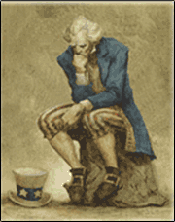Japan's new gateway
Nagoya is the city other Japanese love to look down on. I have been told confidently by many Tokyoites, Osakans, and especially by the haughty natives of Kyoto, that 'Nagoya has no culture.' Most foreign tourists only catch a glimpse of its massive castle (a reconstruction, since the original was almost completely destroyed by wartime bombing) from the windows of a bullet train, stopped briefly at Nagoya Station on their way from Tokyo to Kyoto or Osaka.
The residents of the Chubu region, as the area around Nagoya is known, are regarded as bumpkins, their local food specialties (mainly noodle dishes) are regarded as unexciting, the universities, writers, and other cultural figures from the region are derided, too. Like Philadelphia, Nagoya suffers the contempt of the large and sophisticated cities between which it lies.
Quite unfairly, in my opinion. I am a great partisan of Nagoya, despite its negative image. The city and suburban area together are approximately the same size as greater Chicago: 7 or 8 million people. Getting around Nagoya is simple. The city's subway system is fairly new, sparkling, and efficient. The private Meitetsu Railroad, a vast commuter network, is a superb operation, with comfortable, relatively uncrowded trains running in all directions. Most importantly, Nagoya, which was bombed into rubble during World War II, rebuilt itself with broad, straight boulevards, making traffic move smoothly, and providing expansive vistas.
Nagoya has been the home region of many of Japan's greatest warriors and leaders. The Shoguns Oda Nobunaga, Toyotomi Hideyoshi, and Tokugawa Ieyasu, who successively re—unified Japan after a century and a half of warring principalities, all emerged from Mikawa, as the region used to be known in feudal times. Akio Morita, the legendary founder of Sony, was from Mikawa, as was the inventor and entrepreneur




